Women
Odd Jobs for Eve
Posted By: Paul - Sat Jun 29, 2024 -
Comments (1)
Category: Stereotypes and Cliches, Work and Vocational Training, 1930s, Women
Le Baquet de Mesmer
The famous creator's Wikipedia page. That's him in the role of magician.
Posted By: Paul - Sat Jun 22, 2024 -
Comments (1)
Category: Animals, Magic and Illusions and Sleight of Hand, Movies, 1900s, Women, Dance
Ice Cubes and Beer

Posted By: Paul - Thu Jun 13, 2024 -
Comments (0)
Category: Music, 1960s, Women, Alcohol
Girl Stowaways
As you're reading the first column, jump down to the second image, which is a continuation of same.


Posted By: Paul - Tue Jun 11, 2024 -
Comments (1)
Category: Oceans and Maritime Pursuits, Stupid Criminals, 1950s, Women
Follies of the Madmen #596
Posted By: Paul - Tue May 21, 2024 -
Comments (0)
Category: Stereotypes and Cliches, Advertising, 1960s, 1970s, Women, Perfume and Cologne and Other Scents
Thomas Snell’s Millions
Rich people are weird.Before dipping into this story, some perspective on the value of the estate.


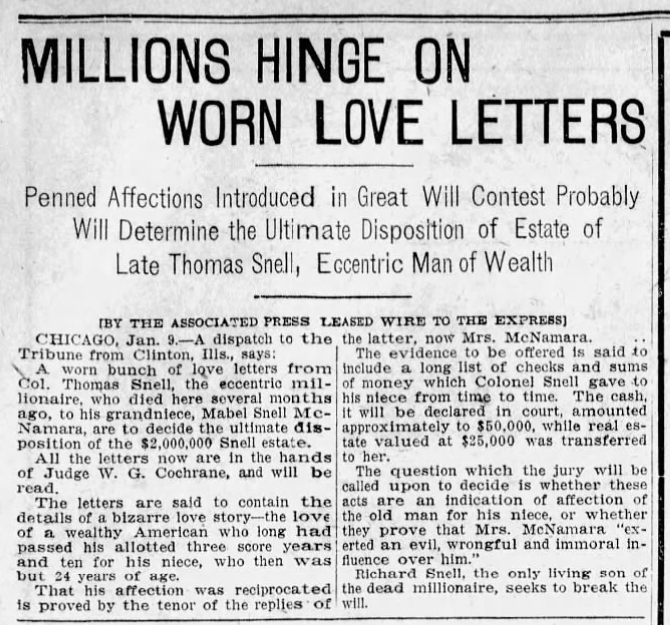

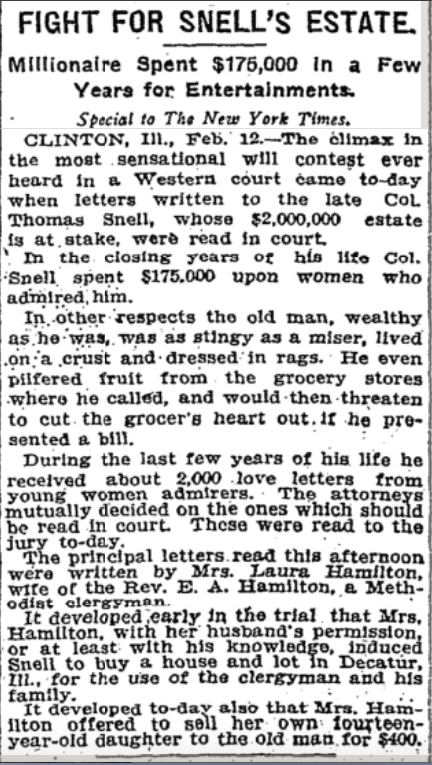

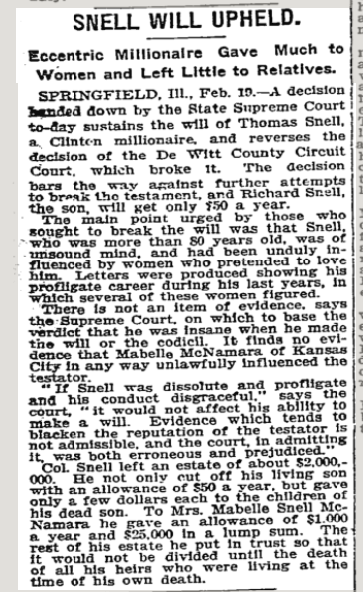
And as final icing on the cake.


Posted By: Paul - Sun Mar 10, 2024 -
Comments (0)
Category: Death, Money, Lawsuits, 1900s, Women
Amazons of the Year 2000
THE DAILY SENTINEL of Colorado predicts in 1950 that all the women of the year 2000 will be giants.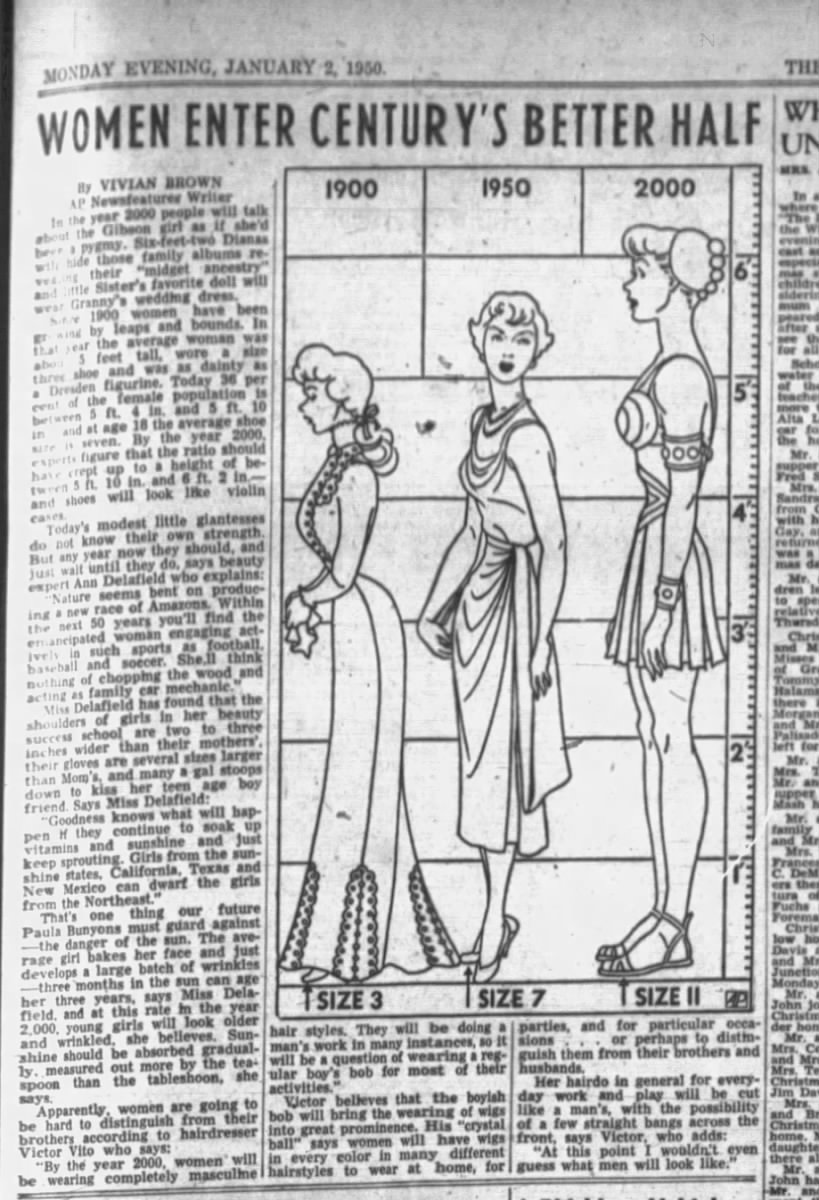
Posted By: Paul - Fri Feb 09, 2024 -
Comments (3)
Category: Excess, Overkill, Hyperbole and Too Much Is Not Enough, 1950s, Women, Twenty-first Century
People-Passing
More accurately, coed-passing. By the mid-1970s it was considered "sort of traditional" at many college football games.What it involved: "a group of fellows sitting behind a coed suddenly picks her up and begins bouncing her — like a sack of potatoes — over their heads to the next row. And up she goes, maybe 75 rows."
So it was like crowd surfing, but entirely involuntary on the part of the coed being flung overhead. And more dangerous, I would think.
According to Wikipedia, "Iggy Pop may have invented crowd surfing at 1970's Cincinnati Summer Pop Festival." I wonder if the idea of crowd surfing spread from music festivals to football games, or if it was the other way around.
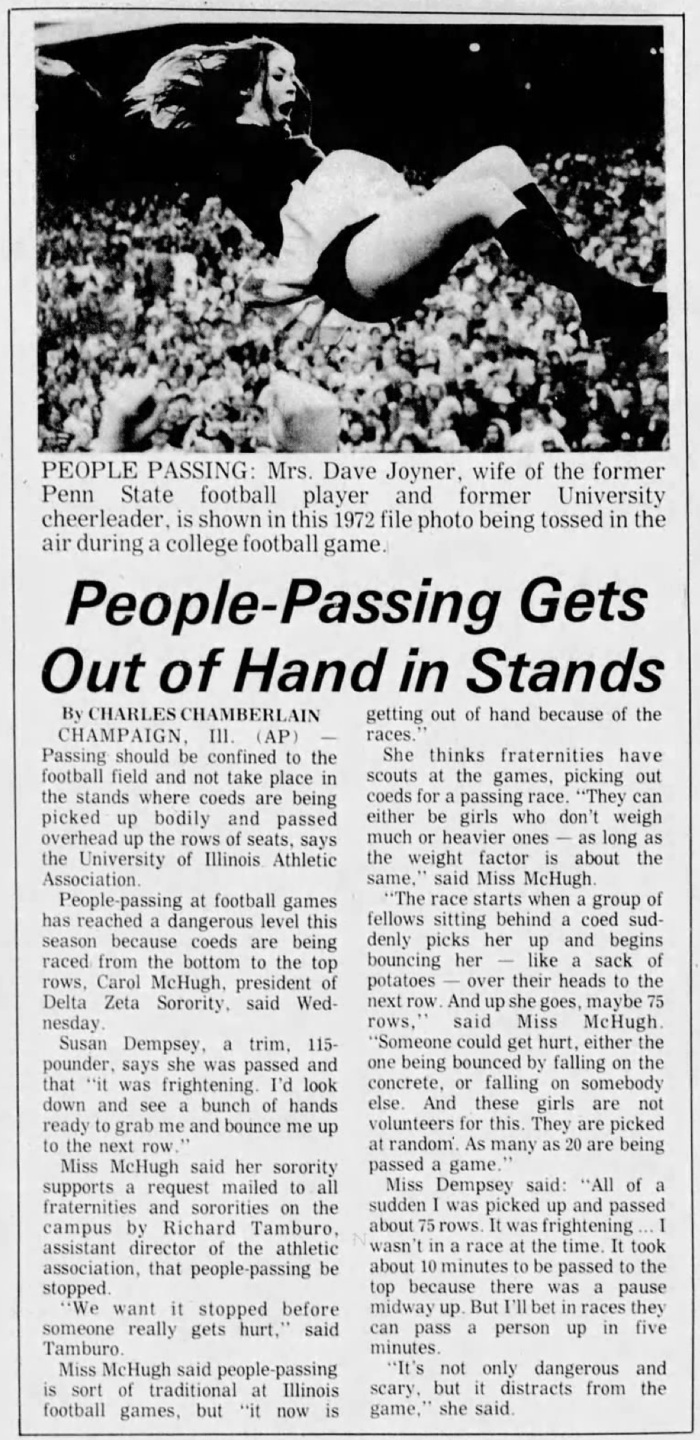
Centre Daily Times (Pennsylvania) - Sep 30, 1976
Posted By: Alex - Tue Jan 16, 2024 -
Comments (0)
Category: Fads, Sports, 1970s, Women
The Association of Angry Young Women
Nov 1957: Anita Nock announced her intention to form an "Association of Angry Young Women."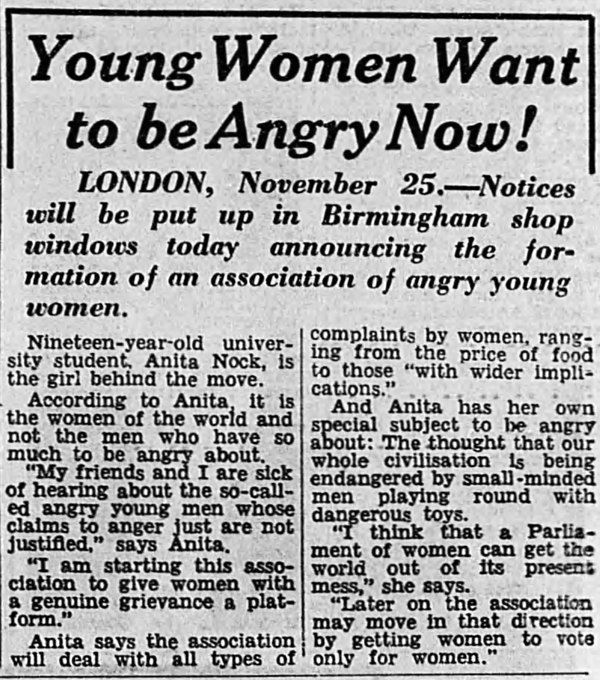
Melbourne Age - Nov 26, 1957
Later reports indicated that her association didn't attract a lot of members.
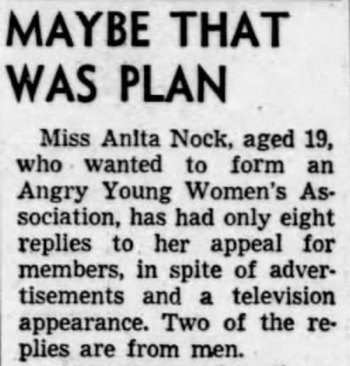
Vancouver Sun - Feb 25, 1958
However, a news report from a few months later suggested that the Association did exist, in some form. The "Monaco incident" referred to involved Lady Docker tearing up a paper flag of Monaco after she learned that her son wasn't invited to attend the wedding of Prince Rainier of Monaco and Grace Kelly. Hearing about this, Prince Rainer had her banned from the entire French Riviera.
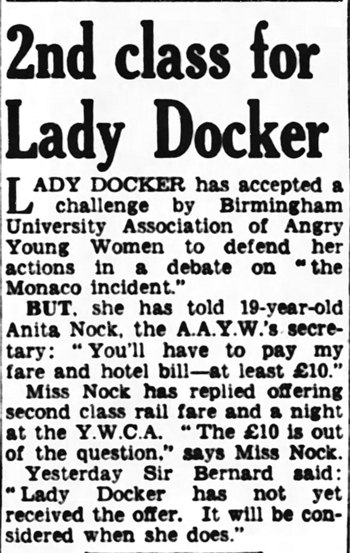
London Sunday People - May 11, 1958
Posted By: Alex - Sat Oct 28, 2023 -
Comments (0)
Category: Clubs, Fraternities and Other Self-selecting Organizations, 1950s, Women
The Yak Yak Contest
Alas, I cannot learn the full roster of contestants, nor the outcome.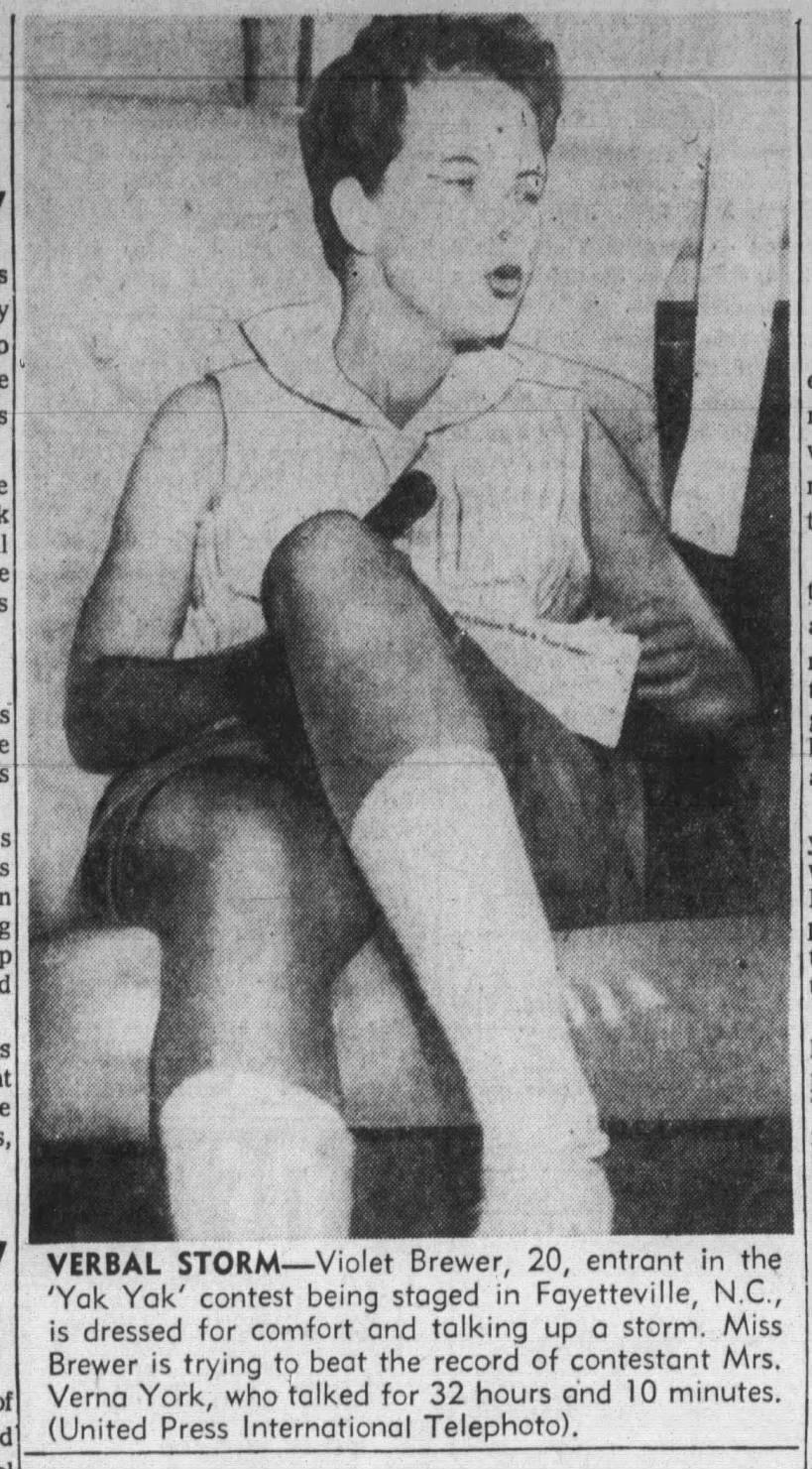
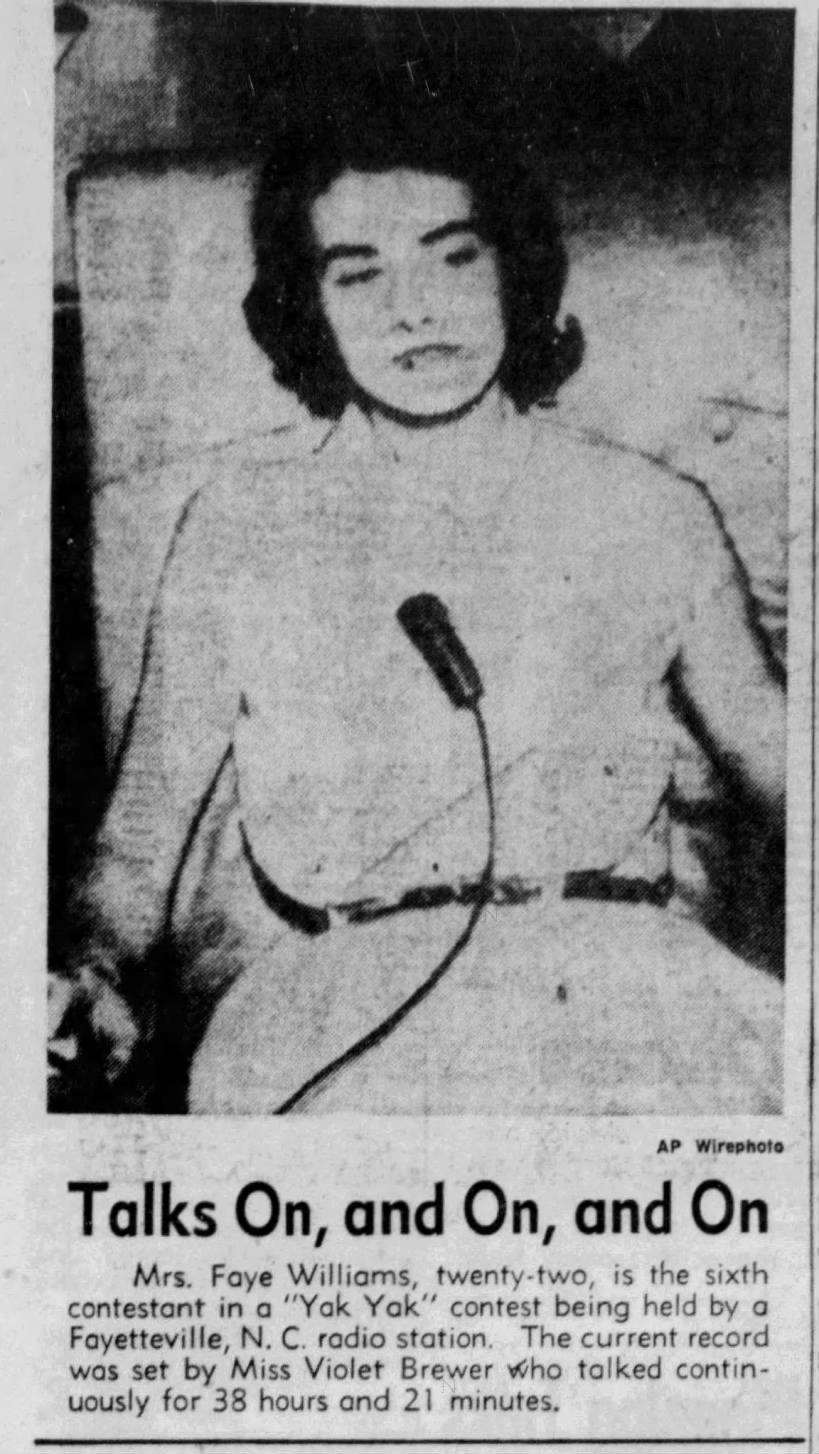
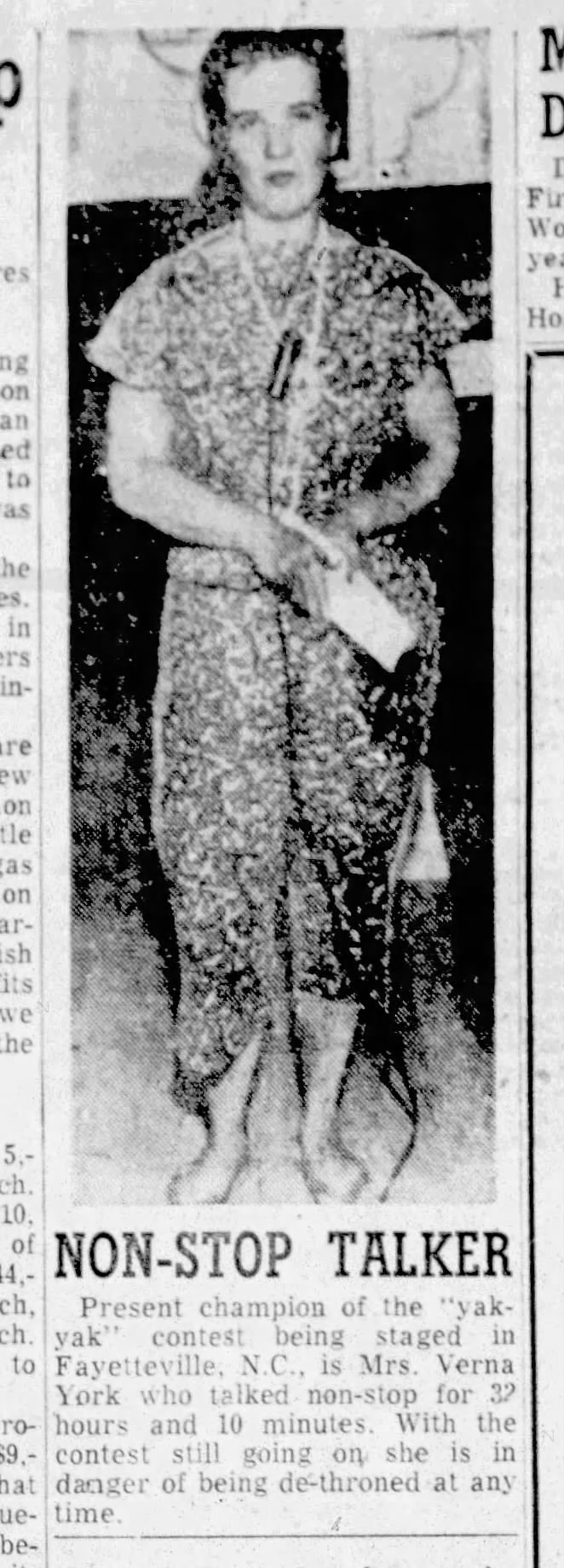
Posted By: Paul - Wed Oct 11, 2023 -
Comments (2)
Category: Awards, Prizes, Competitions and Contests, Languages, Stereotypes and Cliches, 1950s, Women

| Who We Are |
|---|
| Alex Boese Alex is the creator and curator of the Museum of Hoaxes. He's also the author of various weird, non-fiction, science-themed books such as Elephants on Acid and Psychedelic Apes. Paul Di Filippo Paul has been paid to put weird ideas into fictional form for over thirty years, in his career as a noted science fiction writer. He has recently begun blogging on many curious topics with three fellow writers at The Inferior 4+1. Contact Us |




